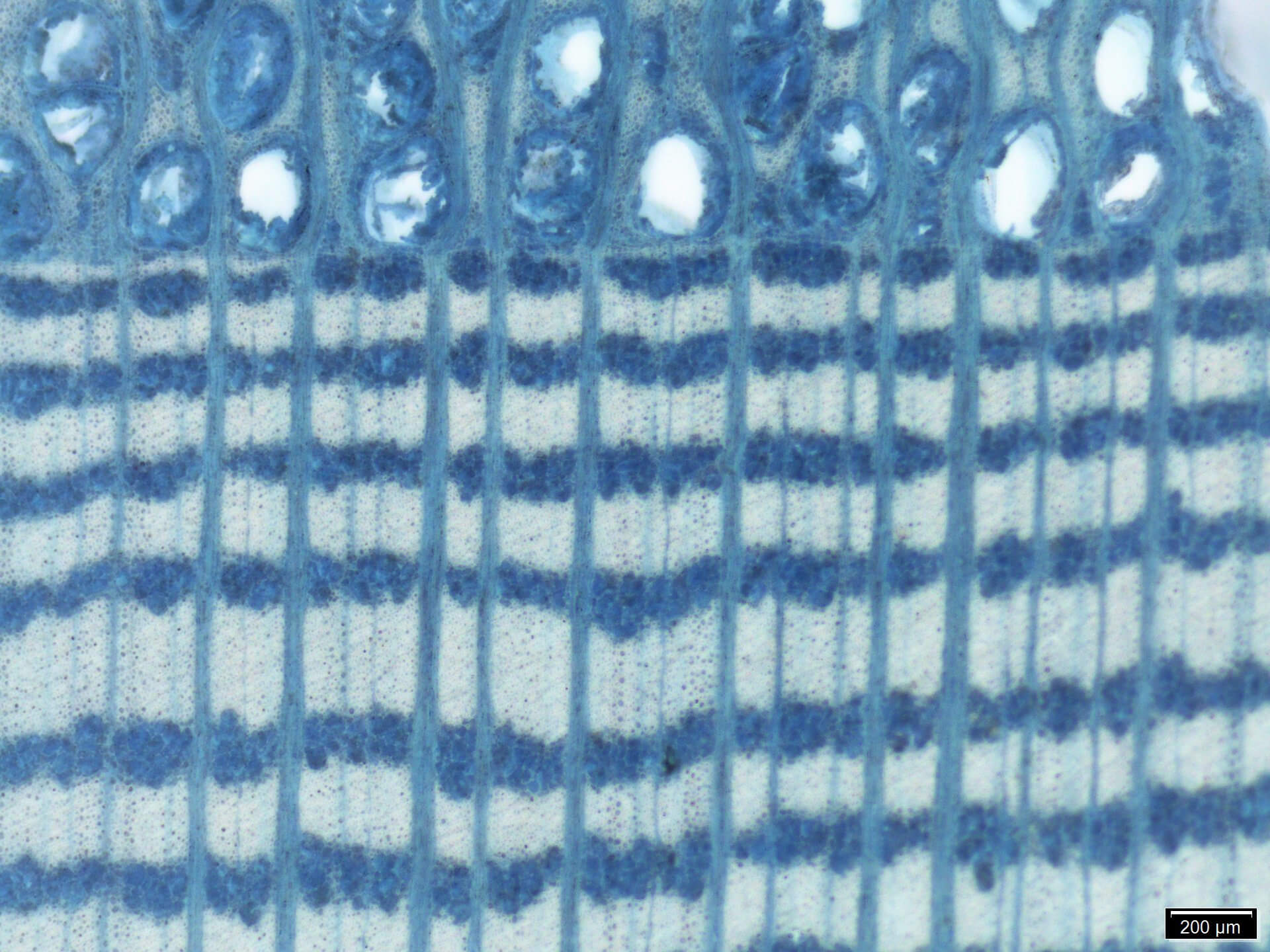
ANTHRACOLOGY AND XYLOLOGY
Anthracology is used in archaeology to analyze charcoal and identify species and artifact origin in the tree. Xylology is the study of wood to define the species and a potential geographic origin.
Precise wood analysis
To complete the carbon-14 dating of the archaeological artifacts, our scientists conduct anthracological and xylological studies to deliver additional results within four weeks of receiving the samples.
The study of wood, between analysis and interpretation
To study wood in archaeology, our scientists conduct analyses using microscopes, but will also interpret the results in light of their knowledge of xylology and anthracology.
In order to provide a complete analysis, we conduct both binocular loupe and microscope examinations of the samples in the laboratory, as well as the study of anatomical features.

Anthracology, a micro-analysis of charcoal
Anthracology is widely used in archaeology. This technique is dedicated to the analysis of charcoal, allows to determine the origin of the sample (type of wood, heart, branch or twig for example), but also the nature of the wood (pine, oak, chestnut, etc.).
With anthracology the examination is carried out under three axes: transverse, tangential and radial in order to determine precisely the species or at least the family from which the charcoal comes.
The anatomical study also gives precise information
Thanks to the know-how and experience of our scientists, CIRAM laboratories do not just provide numbers. We cross-reference both the results, but also the analysis of the composition of the wood and charcoal to deliver as much information as possible about the wood, the branches, and sometimes even the type of forest management from which the wood would have been taken.
Concrete results, analyses, and hypotheses help advance your archaeological issues related to wood and charcoal.
Xylology to identify the essence
Xylology represents the study of all the physical, but also chemical properties of wood.
In archaeology, it will allow the identification of species and species to establish a map of settlements and thus define hypotheses on the geographical origin of artifacts.
Dendrochronology, the other dating of wood
Dendrochronology allows in some cases to refine carbon-14 dating that can be imprecise (intervals of several hundred years). For this method, it is necessary to measure the width of the growth rings of the wood, as well as their succession. However, we will need access to very precise abacuses depending on the wood species and geographical locations.
In addition, the observation of wood rings will inform us about the tree’s environment. For example, narrow rings will indicate rather dense woodlands, conversely, if the rings are wide, the woodlands were scattered. Dendrochronology also delivers valuable information about the weather conditions of the time and the presence of natural disasters (fires, avalanches, etc.).
CIRAM, laboratories for analysis in archaeological context
Depending on your needs, we perform anthracological and xylological analyses, but also other investigations to define the age, characterize the materials and deliver reliable and complete information. Carbon-14 dating, wood and charcoal analysis, we provide results between two and four weeks to meet your constraints related to preventive archaeological excavations.
For more information, ask for a free quote.
